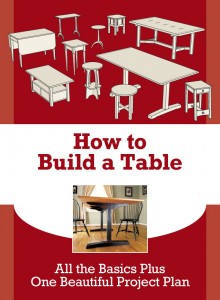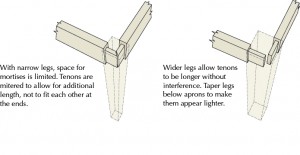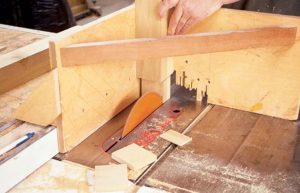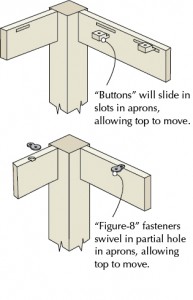We may receive a commission when you use our affiliate links. However, this does not impact our recommendations.

Free woodworking plans are everywhere. This one gives you some real knowledge on tables, especially Shaker style furniture.
If you have found your way onto the “Woodworking Daily” blog list, it may have been via our free woodworking plans page. If not, be sure to check it out and download a few more, especially the latest one on Shaker style furniture that is packed with general information on end table plans, coffee table plans, dining table plans and an overall table plan template.
I like Shaker furniture because it plays well with other styles. That means it will withstand the style test over many years, no matter what other furniture you acquire or make. And if you make it right, Shaker style furniture will of course withstand the other damages that come with time. I mean wear and tear.
When it comes to tables, knowledge of basic woodworking joints is key to preventing wear and tear. Don’t worry. I’m not going to go into a treatise on joinery. But I do want to point you to a helpful blog post from Glen Huey for this particular Shaker table project. There are dozens of ways to complete mortise and tenon furniture. Glen has created a mortise and tenon jig that is cheap, works well and speeds the building process. So be sure to visit that post and download the tenon jig plan (free).

Bob’s detail of the mitered tenon for mortise and tenon furniture (left) and use of a wider leg for the same joint (right). Click the image for a larger view.
Once you’ve completed that dining table, come back to the original free download and re-read Bob Lang’s section on mortise and tenon furniture. I always find that these abstract views make a lot more sense after I have built something that includes the technique in question. This section on different types of tenons for furniture is valuable. Bob discusses not only the types, but why a woodworker uses them. Note for example that the mitered-end variety is not for creating a mitered joint within the joint, but rather to relieve a little extra space within the leg.
The other big takeaway from this project plan, in my opinion, is the discussion of wood movement. Wood movement always matters, but especially when dealing with a wide piece of stock or edge-joined surface. This section of the download can be useful not only in building tables, but also when you start to look at how to build a desk.
So, in summary, we have a few well-curated freebies on the download page – from woodworking ideas to wood furniture design – and we are adding more every few weeks. I’ll follow each upload with a post like this one to offer you a little more depth. Be sure to share this post with your woodworking friends so they can stay in the loop!
–Dan Farnbach
Here are some supplies and tools we find essential in our everyday work around the shop. We may receive a commission from sales referred by our links; however, we have carefully selected these products for their usefulness and quality.











You are not talking liquid moisture when you talk wood movement. You are talking humidity. All wood regardless of age and degree of dryness has a residual moisture level. Common numbers thrown about is 19% and 6%. The percentage is the percent volume by weight that the moisture makes up of the wood. So at 19% moisture content, 19% of the roughly 25 pounds per cubic foot of wood of your table is actually water. If your table weighs 100lbs then 19 pounds of that is water. As that water leaves the wood, the wood tends to move (shrink or swell). The opposite is also true. If your wood was very dry, say 6% MC then if your house is humid and the table absorbs some of that humidity, then the wood again tends to move. There are no coating systems completely impervious to moisture and most of us dont coat the unseen sides thoroughly enough to make the wood completely impervious. Even then, the relative difference between the moisture level inside the wood and the atmosphere could cause problems.
I have seen in a number of publications eg Flexner on Finishing that applying a varnish finish seals the timber and does not let liquid furniture polish/cleaner into the pores. If this is so, then how is it that moisture enters and causes seasonal expansion/contraction?